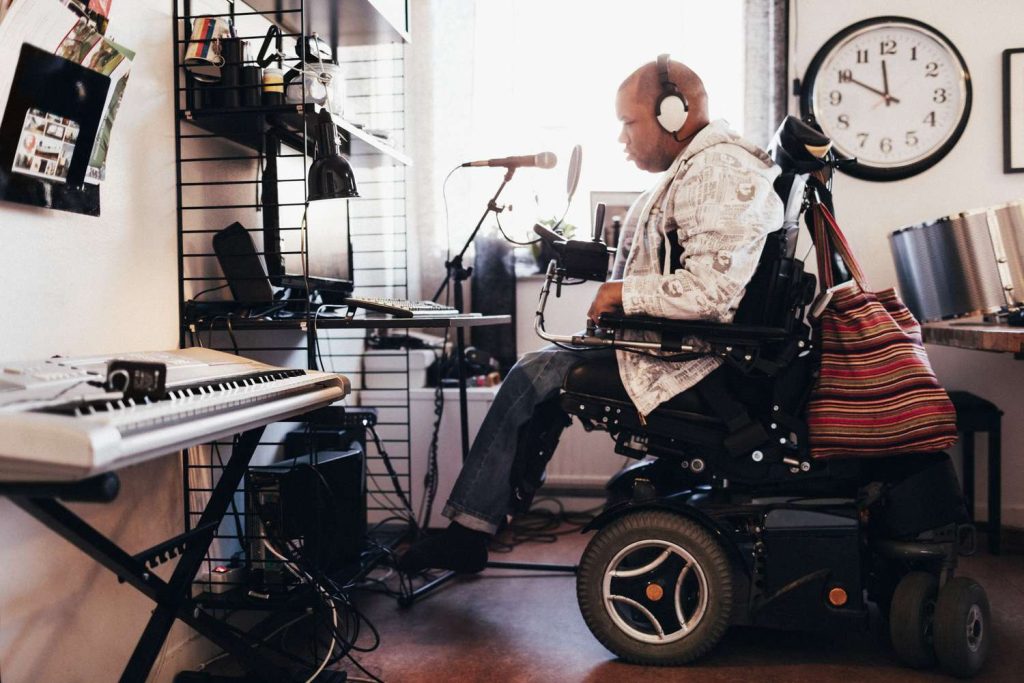Home health rehabilitation is a vital aspect of modern healthcare, aiming to support individuals in their recovery journey and enhance their functionality within the comfort of their own homes. This specialized form of care encompasses a range of therapeutic interventions and supportive services tailored to meet the unique needs of each patient, promoting independence, mobility, and overall well-being. In this discussion, we’ll delve into the significance of home health rehabilitation, its core components, benefits, challenges, and future prospects.
Importance of Home Health Rehabilitation:
- Personalized Care: Home health rehabilitation offers personalized care plans designed to address the specific challenges and goals of each patient. This tailored approach considers individual preferences, abilities, and living conditions, fostering a supportive environment conducive to recovery.
- Enhanced Comfort and Familiarity: Recovering at home provides patients with a sense of familiarity and comfort, which can positively impact their mental and emotional well-being. Being surrounded by loved ones and familiar surroundings can alleviate stress and anxiety, contributing to a faster recovery process.
- Promotion of Independence: By facilitating rehabilitation within the home environment, patients are encouraged to actively participate in their own care and rehabilitation activities. This empowerment fosters a sense of independence and self-efficacy, motivating individuals to strive towards their recovery goals.
- Cost-Effectiveness: Home health rehabilitation can be a cost-effective alternative to inpatient care, as it eliminates the need for prolonged hospital stays or residential rehabilitation facilities. By leveraging existing resources and support systems within the home, healthcare providers can deliver high-quality rehabilitation services at a lower cost.
- Continuity of Care: Seamless continuity of care is achieved through home health rehabilitation, as patients receive consistent support and monitoring from a dedicated interdisciplinary team of healthcare professionals. This continuity ensures that patients remain engaged in their rehabilitation journey, with timely adjustments made to their care plans as needed.
Core Components of Home Health Rehabilitation:
- Physical Therapy: Physical therapists play a central role in home health rehabilitation, focusing on improving mobility, strength, balance, and coordination through targeted exercises and interventions. They assess functional limitations, devise personalized exercise regimens, and provide education on proper body mechanics and injury prevention.
- Occupational Therapy: Occupational therapists help patients regain independence in activities of daily living (ADLs) such as bathing, dressing, and cooking. They assess cognitive and motor skills, recommend adaptive equipment or modifications to the home environment, and teach compensatory strategies to maximize independence and safety.
- Speech Therapy: Speech-language pathologists address communication and swallowing disorders in patients recovering from neurological conditions or injuries. They evaluate speech, language, cognition, and swallowing abilities, providing tailored interventions to improve communication skills and prevent aspiration-related complications.
- Medical Management: Home health rehabilitation often involves close collaboration with physicians and other healthcare providers to manage medical conditions, monitor progress, and optimize medication management. This interdisciplinary approach ensures holistic care and timely intervention for any medical issues that may arise during the rehabilitation process.
- Psychosocial Support: Addressing the psychosocial needs of patients and their families is integral to successful home health rehabilitation. Social workers and counselors provide emotional support, facilitate coping strategies, and connect patients with community resources to enhance social integration and overall well-being.
Benefits of Home Health Rehabilitation:
- Improved Outcomes: Research has shown that home-based rehabilitation can lead to comparable or even superior outcomes compared to traditional institutional care settings. Patients often experience greater satisfaction, functional improvement, and long-term adherence to treatment plans.
- Reduced Readmissions: By promoting continuity of care and providing ongoing support in the home environment, home health rehabilitation can help reduce the risk of hospital readmissions and complications following discharge. This not only improves patient outcomes but also contributes to healthcare cost savings and resource utilization.
- Enhanced Patient Engagement: Home health rehabilitation empowers patients to take an active role in their recovery process, fostering a sense of ownership and accountability for their health outcomes. The personalized nature of home-based care promotes engagement and adherence to treatment regimens, leading to more favorable rehabilitation outcomes.
- Family Involvement: Family members and caregivers play a crucial role in supporting patients during their rehabilitation journey. Home-based care allows for greater involvement of family members in the treatment process, facilitating education, training, and emotional support for both the patient and their loved ones.
- Increased Accessibility: Home health rehabilitation improves access to care for individuals with mobility limitations, transportation barriers, or geographical constraints. By bringing rehabilitation services directly to the patient’s doorstep, home-based care ensures equitable access to essential healthcare services, regardless of location or socioeconomic status.
Challenges and Considerations:
- Care Coordination: Effective coordination among multiple healthcare providers and agencies is essential for delivering comprehensive home health rehabilitation services. Communication gaps, fragmented care, and logistical challenges may arise, necessitating robust care coordination mechanisms and interdisciplinary teamwork.
- Safety and Environmental Factors: Ensuring the safety of the home environment is paramount in home health rehabilitation, particularly for patients with mobility impairments or cognitive deficits. Assessing and addressing potential hazards, implementing fall prevention strategies, and educating patients and caregivers on home safety measures are critical considerations.
- Technological Integration: Leveraging technology-enabled solutions such as telehealth, remote monitoring devices, and mobile health applications can enhance the delivery of home health rehabilitation services. However, technological integration may pose challenges related to accessibility, digital literacy, and privacy concerns, requiring thoughtful implementation and user support.
- Reimbursement and Funding: Reimbursement policies and funding mechanisms for home health rehabilitation vary across healthcare systems and payers, posing financial challenges for both patients and providers. Adequate reimbursement, coverage for telehealth services, and innovative payment models are needed to sustainably support home-based rehabilitation initiatives.
- Workforce Shortages: Addressing workforce shortages and ensuring a sufficient supply of skilled healthcare professionals is crucial for meeting the growing demand for home health rehabilitation services. Recruiting, training, and retaining qualified therapists, nurses, and other providers are essential for delivering high-quality care to a diverse patient population.
Future Directions and Innovations:
- Telehealth and Remote Monitoring: The widespread adoption of telehealth technologies and remote monitoring devices is poised to transform home health rehabilitation, enabling virtual consultations, real-time data tracking, and remote supervision of exercise programs. These innovations enhance access to care, promote patient engagement, and facilitate proactive intervention.
- Personalized Medicine and Digital Therapeutics: Advances in personalized medicine, genomic profiling, and digital therapeutics hold promise for tailoring home health rehabilitation interventions to individual patient characteristics and genetic predispositions. Data-driven insights and predictive analytics can inform precision rehabilitation strategies, optimizing outcomes and minimizing treatment variability.
- Augmented Reality and Wearable Devices: Augmented reality (AR) applications and wearable devices offer interactive rehabilitation experiences, providing real-time feedback, guidance, and gamified exercises to enhance patient engagement and motivation. These immersive technologies support home-based rehabilitation programs by simulating clinical environments and facilitating remote supervision.
- Community Partnerships and Collaborative Care Models: Strengthening partnerships between healthcare providers, community organizations, and social support networks is essential for promoting holistic care and addressing the social determinants of health in home health rehabilitation. Collaborative care models that integrate medical, behavioral, and social services can enhance care coordination and facilitate seamless transitions between healthcare settings.
- Data Analytics and Predictive Modeling: Harnessing big data analytics and predictive modeling techniques enables proactive identification of individuals at risk of functional decline or adverse outcomes, allowing for early intervention and personalized care planning in home health rehabilitation





